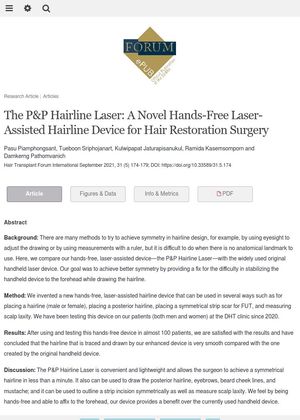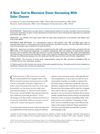The P&P Hairline Laser: A Novel Hands-Free Laser-Assisted Hairline Device for Hair Restoration Surgery
September 2021
in “
Hair transplant forum international
”
P&P Hairline Laser laser-assisted device hair restoration surgery DHT clinic hairline design posterior hairline eyebrows beard cheek lines mustache strip incision scalp laxity hairline laser hairline device hair surgery hair clinic hairline eyebrow design beard design mustache design scalp measurement

TLDR The P&P Hairline Laser is a new, hands-free device that improves hairline symmetry in hair restoration surgery and can create a symmetrical hairline in less than a minute.
The P&P Hairline Laser, a hands-free, laser-assisted device, was developed to improve symmetry in hairline design during hair restoration surgery. The device was tested on nearly 100 patients at the DHT clinic since 2020. The results showed that the hairlines traced and drawn by the P&P Hairline Laser were smoother compared to those created by the original handheld device. The P&P Hairline Laser is lightweight, convenient, and can achieve a symmetrical hairline in less than a minute. It can also be used to draw the posterior hairline, eyebrows, beard cheek lines, and mustache, outline a strip incision symmetrically, and measure scalp laxity. The hands-free feature and ability to affix to the forehead provide a benefit over the currently used handheld device.





